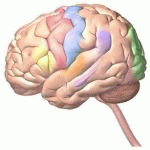Neurology
|
24 april 2014 00:50:48 |
| Brainstem infarcts predict REM sleep behavior disorder in acute ischemic stroke (BMC Neurology) |
|
Tweet Background:
Rapid eye movement (REM) sleep behavior disorder (RBD) is a sleep disturbance in which patients enact their dreams while in REM sleep. The behavior is typically violent in association with violent dream content, so serious harm can be done to the patient or the bed partner. The prevalence of RBD is well-known in Parkinson`s disease, Lewy body dementia, and multiple systems atrophy. However, its prevalence and causes in stroke remained unclear. The aim of this study was to determine factors influencing the appearance of RBD in a prospective cohort of patients with acute ischemic stroke.
Methods:
A total of 2,024 patients with first-ever or recurrent acute ischemic stroke were admitted to the Acute Stroke Unit at the Prince of Wales Hospital between January 2010 and November 2011; 775 of them received an MRI scan. Within 2 days of admission, a research nurse collected demographic and clinical data and assessed the severity of each stroke using the National Institute of Health Stroke Scale (NIHSS). One hundred and nineteen of the 775 patients meeting study item criteria formed the study sample. All eligible participants were invited to attend a research clinic 3 months after the onset of the index stroke. In the attendance, a research assistant administered the MMSE and the 13-item RBD questionnaire (RBDQ).
Results:
Among 119 stroke patients, 10.9% were exhibited RBD, defined as an REM sleep behavior disorder questionnaire score of 19 or above. The proportion of patients with acute brainstem infarct was significantly higher in RBD patients than those without RBD. Compared with patients without RBD, RBD patients were more likely to have brainstem infarcts and had smaller infarct volumes. In a multivariate analysis, in which stroke location and infarct volume were inserted, brainstem infarcts were an independent predictor of RBD (odds ratio = 3.686; P = 0.032).
Conclusions:
The results support the notion of a predominant role of brainstem injury in the development of RBD and suggest that patients with brainstem infarcts RBD should be evaluated by a clinical neurologist. |
| 123 viewsCategory: Neurology |
 Comprehensive behavioral study of mGluR3 knockout mice: implication in schizophrenia related endophenotypes (Molecular Brain) Comprehensive behavioral study of mGluR3 knockout mice: implication in schizophrenia related endophenotypes (Molecular Brain)Chronic stress impairs GABAergic control of amygdala through suppressing the tonic GABAA receptor currents (Molecular Brain) 
|
| blog comments powered by Disqus |
MyJournals.org
The latest issues of all your favorite science journals on one page
The latest issues of all your favorite science journals on one page



